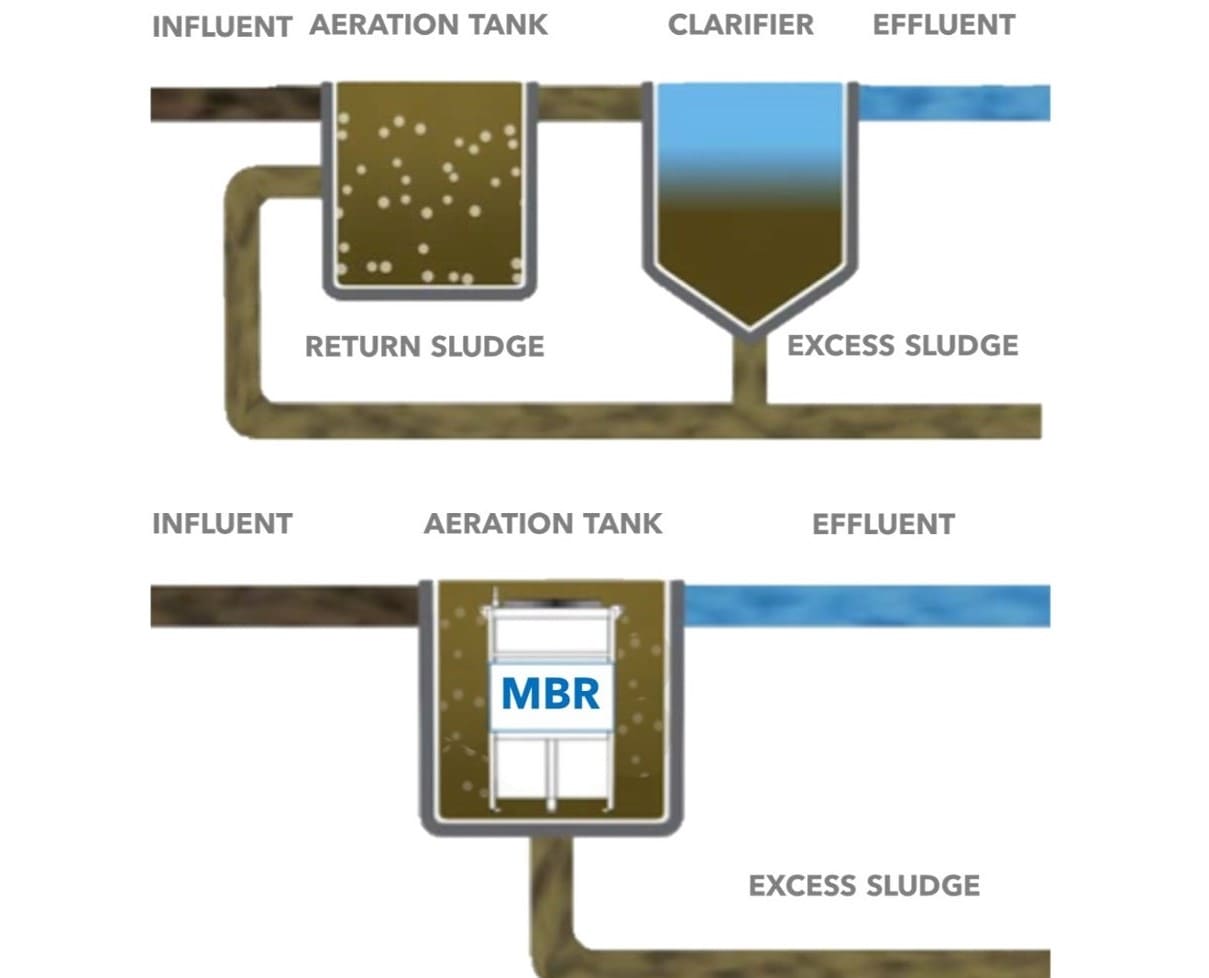
TECHNOLOGY
THE MBR
PRINCIPLES
MBR water treatment is a proven technology set to become a standard in the management of municipal and industrial wastewater worldwide to step towards United Nations Sustainable Development Goals (SDG).
ADVANTAGES
• Less sludge
• High stability
• High effluent quality
• Reduce maintenance
• Ammonia removal
• Smaller footprint
What is a Membrane Bioreactor (MBR)?
Membrane Bioreactor (MBR) is a modern, cost-effective and most efficient wastewater treatment process, which combines a filtration membrane technology for solid-liquid separation together with traditional activated sludge process.
With an MBR system, microorganisms are completely trapped in the bioreactor, achieving complete separation between Hydraulic Retention Time (HRT) and Sludge Retention Time (SRT).
MBR systems allow much longer SRT (typically between 20 to 100 days), while reducing HRT; therefore reducing significantly the amount of sludge compared to CAS systems. MBR systems have no sludge bulking or sludge rising problems.
MBR technology delivers high stability and reduces maintenance; it accepts higher MLSS sludge concentration (4,000 ~ 18,000 mg/L), while remaining stable across a wide range of conditions and feed water’s fluctuations.
Using semi-permeable filtration membranes with pore size of 0.1~0.4 μm, MBR produces highly purified effluent with excellent flux. It can be directly reused or discharged directly.
MBR systems successfully remove ammonia from feed waters, through a nitrification process.
By removing the need for a secondary clarifier and the possibility to feed much higher sludge concentration with MBR, bioreactor tank volumes can be only ½ to ¼ of a Conventional Activated Sludge (CAS) plant.

